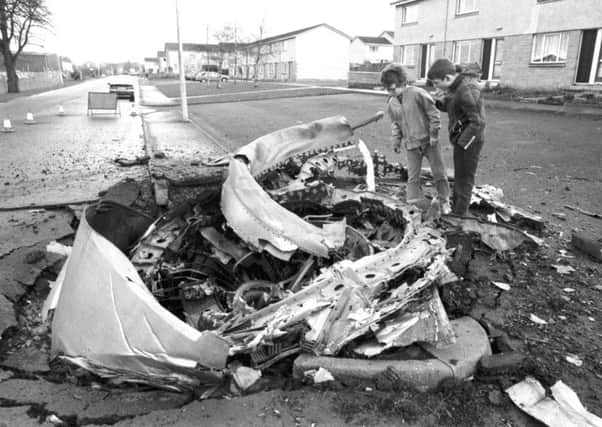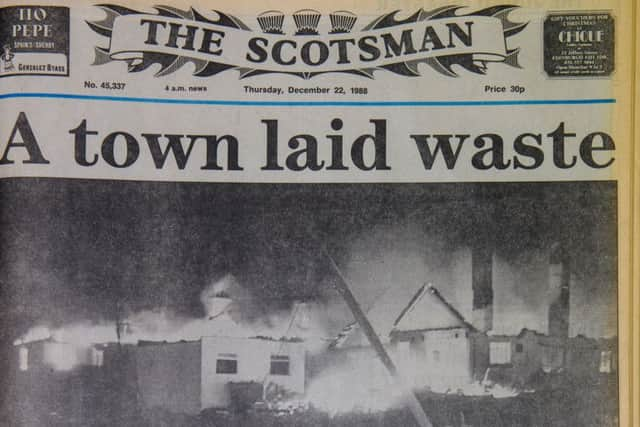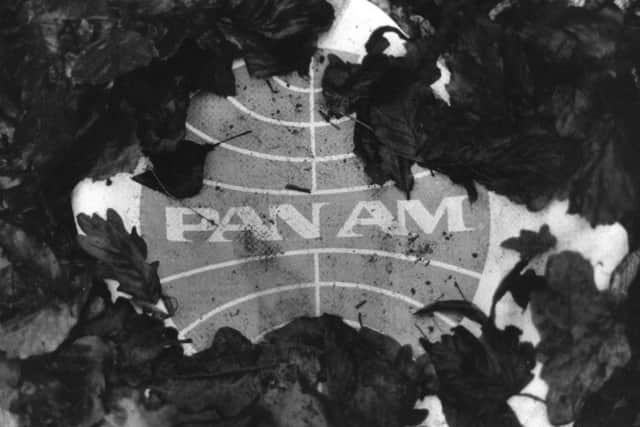Lockerbie anniversary: How The Scotsman reported the disaster


It never takes long for a major emergency or disaster to announce itself in the offices of a newspaper. The first calls came in from local correspondents within minutes of an explosion being seen and heard at Lockerbie on the night of 21 December 1988.
These first sketchy reports linked it to an explosion at a petrol station but it soon became horribly clear that it was something so much bigger. I was on the point of leaving the office after finishing for the day but held back as more information came in. It was the beginning of a long, emotional, difficult night as the horror of what was to become known as Britain’s worst peacetime disaster unfolded.
Advertisement
Hide AdReports trickled in. The petrol station theory gave way to there having been a crash between low flying military aircraft in an area well known for training exercises. Then it was confirmed that it was a passenger plane and there were fatalities.


Before this was known, decisions had been taken to despatch reporters from both Edinburgh and Glasgow to Lockerbie. One took the train from Edinburgh as the main west coast line still appeared to be open while a Glasgow reporter and photographer drove down the M74.
Those who remained in the office hit the phones to try to get as many details as quickly as possible. Calls to local services were met by a constant engaged tone as communications were down across the area.
The net widened to emergency services contacts in Glasgow, Edinburgh and the Borders to try to find out more.


Confirmation came in that it was a Pan Am plane which had left London at 6:25pm, heading for New York. That was followed by the news there were 259 people on board.
Although it was expected that a flight so close to Christmas would be busy, hearing the number was genuinely shocking. In an office brightened by festive cards and the sparkle of tinsel, we feared we were reporting on death on a huge scale.
Advertisement
Hide AdIt was far too early to know if this was a tragic accident or something much more sinister and checks were made on the safety record of the Pan Am fleet and the particular type of aircraft to see if that could provide any clues.
The job of collating all the breaking information and turning it into a front page story fell to James Meek, who would later become a Booker-nominated novelist. These were the days before the internet when information arrived in newspaper offices from around the world courtesy of wire services on long loops of printed paper. Jim’s desk was covered in these, together with contributions from staff reporters on the ground and other colleagues as his fingers flew over the keyboard, condensing what was known into The Scotsman’s main report.
Advertisement
Hide AdHalfway through the night, the then editor, Magnus Linklater, arrived in the office, dressed in a dinner suit fresh from a function he had been attending. From the middle of the newsroom, he began to conduct his editorial orchestra, instructing that the headlines on all the main stories should be a quote from a person involved. It was a brilliant idea and, once implemented, gave a chilling coherence to what had happened that night.
The headline on the front page was “A Town Laid Waste” with the story describing a “Dresden-like maelstrom of burning homes and cars.” I had been working on a story on the response from medical and ambulance staff who travelled from as far as Edinburgh and Glasgow to help. The headline on that story read simply: “Half of Dumfries turned up but there was nothing to do.” At one point the centre of Lockerbie was lined with ambulances but only three were needed to take the injured to hospital. Another headline read: “The sky was raining fire… it was like a nuclear explosion.”
There had been three hours of frantic activity to get the paper’s first edition together and then a lull before work began on updating, refining and improving pages for later editions.
We all took a break and headed to the pub. Drinks were ordered, seats were found and then for the first time that night, silence fell across the group. We had been so immersed in producing the paper that we never had the time to consider the full enormity of what had occurred only hours before in Lockerbie. We were all lost in our own thoughts. It was completely unintended but turned into a makeshift one minute’s silence for those who had lost their lives.
Later I would spend many days in Lockerbie reporting on the aftermath of the disaster; seeing the huge crater gouged out in Sherwood Crescent where people’s houses once stood and an aircraft engine buried in the road in another part of the town just yards from a row of houses. New names were added daily to the list of the identified dead and grieving relatives, many of whom had travelled from the United States, could be seen visiting the crash sites, trying to make sense of something that made no sense at all. At that time it seemed the saddest place in the world – a mass grave for 270 innocent people.
The Lockerbie disaster has commanded millions of column inches over the years as the arguments have raged over who was responsible. It will be remembered in anniversaries far into the future. Anyone who was involved that night, whether a passing motorist seeing a plane crash to earth, an emergency worker racing to the scene, a resident helping their neighbours or journalists working to communicate what had happened, will have their own indelible memories of that dreadful night, four days from Christmas 30 years ago.
